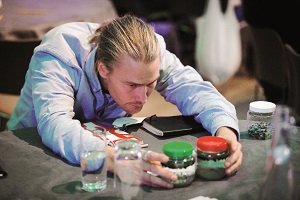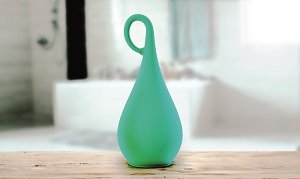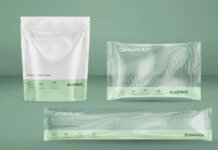For plastics to exist in a world where ‘waste’ is a dirty word, linear manufacturing models must be driven out and replaced with ones that circle, spiral or loop. Joanne Hunter joined designers, entrepreneurs and business strategists in finding out what the future looks like for plastics in the new industrial Age of the Circular Economy.
The future of a sustainable plastics industry rests on bold plans that involve ditching cheap manufacturing and rethinking the design of products, processes and business models, so rather than fuel a throwaway society, they work together to increase the worth of resin materials by prolonging their usefulness in multiple cycles of reuse and re-manufacture.
Calling for reinvention on a massive scale, a sustainable industry must look beyond recycling and radically reassess value systems. So says the Plasticity Forum, an organization set up to give designers around the world the knowledge they need to feed circular thinking into their work with client brands and the new products they develop. The starting point of an initial design is the avoidance of waste; ensuring markets exist for byproducts of manufacturing processes and that used packaging materials have an afterlife. Founder of Plasticity Forum Douglas Woodring looked dapper on the day in a suit made from plastic bottles. Around 70% made from bottles, 22 of them go into one lightweight suit. The fabric is washable, but experts in the room conceded there are carcinogenic implications.
Appropriately, the event in September happened during London Design Week at the RSA (Royal Society for the Encouragement of Arts, Manufactures and Commerce). The institution recently made a four-year study of designing for a circular economy and the report Lessons from The Great Recovery 2012–2016 concludes that the necessary root-and-branch change will rely on cooperative, interconnected, local and global networks. The Forum backed this up and presented case-study evidence of success in markets outside of packaging.
“Everything needs redesigning,” says Quentin Drewell, UK Circular Economy Lead at Accenture, a global consultancy that claims to have identified business models with potential to give a US$ 4.5 trillion uplift in GDP by 2030 and multiply the value by seven times of products that have a higher utility over their lifetime.
Accenture’s how-to list for successful circular thinking includes selling the utility that a product supplies; switching from making products as cheaply as possible to maximizing revenue over a lifetime; understanding the advantages of circularity and selling them to designers; addressing wasted capacities and wasted life cycles; design for longevity and utility; educating on the whole business; moving to local suppliers and smaller quantities; setting up a business to offer customer care; changing the mindset about return chains; starting with pilots and not being afraid of failure.
The audience heard from innovators that turned conventional design thinking on its head and have found or are looking for support to get their concepts off the ground commercially. Crunching the numbers for an eggshell recovery project has convinced an egg-processing company boss that his cracking idea for a waste-saving business is viable and merits the CE stamp of approval. Supplying 1.5 million boiled eggs a week to major UK retailers, Justegg’s managing director Pankaj Pancholi spoke of his need to find markets for the calcium carbonate (CaCO3) he can produce from the waste he expensively sends to landfill. Apparently, broken shells are charged at the same rate as plastics.

He says 12 grams of each egg is shell, and 150,000 eggs give as much as 300–400 kg of the stuff normally sourced from chalk and a common filler in plastics manufacture. EU funding helped towards the £100 million development of technology by Leicester University to obtain pure calcium carbonate. The process separates out the white membrane—valuable in its own right as a treatment for burns. Trials as a filler for plastics at laboratory scale have proved successful, says Pancholi.
However, his idea of using eggshell-derived filler for Justegg packaging could be thwarted by food-contact regulation. He will face issues such as contamination, allergens declaration and salmonella control, and compliance with Directive 2000/13/EC and Regulation EU 10/2011.
But the carpet industry is a brighter prospect and makes walking on eggshells a real possibility. Willem De Vos, chief executive officer of the Society of Plastics Engineers, explained that foam carpet backing composed of 5:1 calcium carbonate and latex is used in carpeting made from recycled polyamide yarn. Such products target the commercial sector where leasing is an option. In circular thinking terms, this sounds like an exemplar business model.
David Wilson of Vanden Recycling has been in the business of making recycling easier through improving bottle design for 18 years. The company, predominantly active in Asia, aims to double UK and European business to 50% in the next two years by growing collection volumes of scrap plastics including HDPE, PP, LDPE, PA, ABS and PCABS. Wilson explained, “We want more markets closer to home for products we can collect and process, as well as Asia. Recycling can be a long chain of events with collection system development often overlooked.”

For the benefit of designers in the room, he summed up the manual and automatic sorting techniques and stressed the need to ‘design for recycling.’ A two-liter Irn Bru bottle from a generation ago used a paper label, PVC vinyl glue and cap with a foam PVC insert. This made it “incredibly expensive to manufacture and impossible to recycle,” he said, and “a lose-lose” design option. He turned his attention to LDPE pallet wrap and garment shroud wrap to highlight how an attached label will degrade material because some of it will evade the filter process. Recyclers resort to cutting them out with scissors, he said. “Because of the large number of material types we see presented into the recycling stream, we need a lot of options and therefore a global organization to cope with packaging recycling needs,” he concluded.
One-piece wonder

The Shampoo Bottle of the Future has a one-piece, mono-material structure with the organic form of an exotic carnivorous plant—the inspiration for its designer, Marilu Valente. A 3D-printed prototype reveals a flexible arching neck with a mouth engineered to fit tightly into the body in such a way as to prevent leakage. It also responds to an environmental challenge by being refillable.
Speaking to Packaging South Asia, she said, “I produced two prototype versions of the bottle—one which is refillable from the small orifice and the second version can be opened by screwing out the bottom of the bottle, so you would have enough space to clean the inside and easily refill it.”
Code breaker
MBA Polymers cites responsible resource management as the route to an environmentally sound plastics industry. “We’ve taught the world that you can recycle from complex streams,” said company chief executive officer Richard McCombs in his talk Designing for quality in the afterlife. He says MBA ‘broke the code’ to separating out six polymers mechanically and is producing at prices lower than virgin alternatives. He thinks the plastics waste recycling stream should learn from the evolution of steel recycling.
Built for utility
Protective Packaging Systems co-founder Jeff Pitt made the case for reusable transit packaging aimed at the durables market. Alternative EPS and pulp-based systems are, respectively, difficult to recycle and can be expensive to develop, he said. ‘Lo-g’ Fragility packaging system incorporates buffers, bellows and springs, tailored cavities, hinge mechanisms, an independent suspension system and a locking device into custom-engineered packaging. He says users who specify polyethylene derived from sugarcane can achieve a cradle-to-cradle solution ‘marginally more expensive than HDPE.’ A licensee of the technology in Thailand has extruded material comprising 50% bio-based PE ready for rolling out by the customer into global markets.
Pitt said users can make significant transportation savings and get benefit from overall smaller packs that require less material. Products are often finished with a printed lightweight sleeve and can incorporate stackable features for retail. A commercialized champagne application has been designed for reuse as a multicavity wine-rack.
The global discussion on circularity this year started with a spring meeting in Hong Kong and will continue in its effort to inspire collaborative projects around the world. It brings together wearables, durable textiles, and other sectors, creating a network of alliances waging war on waste, on land and at sea.











